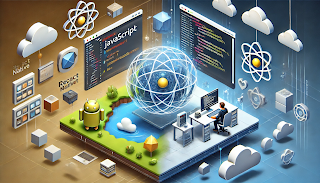The year 2024 has witnessed a significant evolution in DevOps practices, driven by the increasing demand for faster and more reliable software delivery. In the world of technology, DevOps has become a key player in how software is developed and managed. But what exactly is DevOps, and why is it so important? Let's delve into some of the key trends shaping the DevOps landscape in 2024:
What is DevOps?
DevOps is a modern approach to software development that focuses on
collaboration, automation, and continuous delivery. It bridges the gap between
development and operations teams, enabling them to work together seamlessly.
This approach speeds up the process of creating and delivering high-quality
software by automating tasks across the entire lifecycle—from coding and
testing to deployment and monitoring.
With DevOps, every phase of software development is streamlined,
reducing errors and increasing productivity. It promotes a culture of
continuous improvement through regular feedback, allowing teams to quickly
adapt and innovate. By adopting DevOps, organizations can become more agile,
cut costs, and accelerate their innovation processes.
Key DevOps Practices: -
o
Continuous Integration (CI):
CI
means frequently combining code changes from different developers into a single
shared project. By integrating code regularly, teams can detect and fix bugs
early, which prevents issues from piling up and makes sure the code works well
together.
o
Continuous Delivery (CD):
CD
ensures that once code is integrated, it’s automatically tested and prepared
for deployment. It makes releasing updates faster and more reliable because the
code is always in a deployable state. This way, new features or fixes can be
delivered to users quickly and with less risk.
o
Infrastructure as a Code (IaC):
IaC
involves managing and provisioning servers and infrastructure using code,
rather than manual processes. This practice ensures that infrastructure setups
are consistent and repeatable. It simplifies the process of setting up and
scaling environments, making it easier to manage large systems.
o
Monitoring and Logging:
Continuous
monitoring involves keeping an eye on the software’s performance, while logging
records what happens in the system. By monitoring and logging, teams can detect
and troubleshoot issues in real-time, understand system performance, and make
data-driven improvements.
o
Collaboration and Communication:
DevOps
emphasizes open communication and teamwork between development and operations
teams. Better collaboration ensures that everyone is aligned on goals and
processes, leading to more efficient and effective software delivery.
o
Automated Testing:
Automated
testing involves using tools to run tests on code automatically whenever
changes are made. This practice helps catch bugs early and ensures that new
changes don’t break existing functionality, making the software more reliable.
o
Version Control:
Version
control systems track and manage changes to code over time. It allows teams to
collaborate on code, keep track of changes, and roll back to previous versions
if something goes wrong.
o
Configuration Management:
Configuration
management involves maintaining and managing system settings and
configurations. It ensures that systems are set up consistently and can be
easily replicated, which reduces errors and simplifies maintenance.
o
Feedback Loops:
Feedback
loops involve regularly collecting and acting on feedback from all stages of
the development process. Continuous feedback helps teams make quick adjustments
and improvements, leading to better software and faster development cycles.
Emerging Trends in DevOps: -
o
AI and Machine Learning Integration:
Artificial
Intelligence (AI) and Machine Learning (ML) are increasingly being used in
DevOps to automate routine tasks, predict issues before they happen, and
optimize performance. Tools powered by AI can analyse vast amounts of data to
provide insights and recommendations for improving processes.
o
DevSecOps:
Security
is becoming an integral part of the DevOps pipeline, leading to the rise of
DevSecOps. This approach integrates security practices within the DevOps
process from the start, ensuring that code is not only functional but also
secure.
o
GitOps:
GitOps
extends DevOps practices using Git as the source of truth for declarative
infrastructure and applications. Changes to infrastructure are made through Git
commits, making it easier to track and manage changes in a version-controlled
manner.
o
Server less Architectures:
Server
less computing allows developers to build and run applications without managing
servers. This trend is gaining traction because it simplifies deployment and
reduces operational overhead, letting teams focus more on coding and less on infrastructure.
o
Observability Over Monitoring:
Observability
is a step beyond traditional monitoring. It focuses on understanding the
internal state of a system through data collection, helping teams troubleshoot
complex issues and gain deeper insights into system behaviour.
o
Cloud-Native Technologies:
The rise
of cloud-native technologies, such as Kubernetes for container orchestration,
is changing how applications are developed and deployed. These technologies
make it easier to build scalable and resilient applications in the cloud.
The Future of DevOps: -
As technology
evolves, so will DevOps practices. We can expect even more automation, smarter
tools, and deeper integrations with emerging technologies. The core principles
of DevOps—collaboration, automation, and continuous improvement—will continue
to drive its evolution.
In essence, DevOps
is about creating a culture where development and operations teams work
seamlessly together to deliver high-quality software efficiently. By staying
informed about the latest trends and embracing new practices, organizations can
stay competitive and responsive in an ever-changing tech landscape.
So, whether you’re
new to DevOps or looking to refine your approach, keeping an eye on these
trends will help you make the most of this dynamic field. Happy DevOps-ing…!
Blog by: -
Nandini Gondhali.
Software Developer | Techneutron





No comments:
Post a Comment